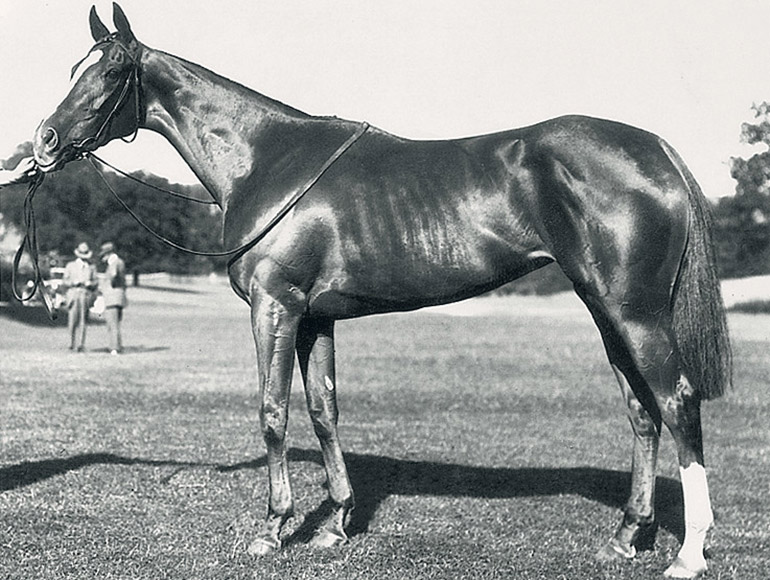
Lambton, not merely the trainer of thirteen English Classic winners, but also the author of a classic turf book, Men and Horses I Have Known, had to decline as he had a full yard.
However, he agreed to buy some yearlings at the forthcoming sales. Lambton was instructed to concentrate on fillies, unless particularly attracted by one or two colts.
Yearlings were sold far earlier in the season than is the practice today. The July Sale at Newmarket and the Doncaster Sale coinciding with the St. Leger meeting produced the best catalogues. Over the next fifteen months the Aga Khan assembled the finest collection of fillies ever accumulated by a single individual in such a brief space of time.
There was one very special purchase at 7,700 guineas - a filly by Tracery out of Blue Tit. The Aga Khan showed just how much she meant to him by naming her Teresina after his beloved wife, the Begum Teresa Aga Khan, mother of Prince Aly Khan and grandmother of the present Aga Khan.
Teresina more than lived up to expectations. She was a filly of great versatility that was 2nd in the Coronation Stakes at Royal Ascot over a mile and in the Eclipse Stakes over 10 furlongs, and won four races including the Goodwood Cup (2 miles 5 furlongs). In 1930, Teresina’s daughter Theresina gave her owner-breeder his first Irish fillies’ Classic.
From the same Doncaster sales ring came another fine filly, Cos for 5,000 guineas. This handsome brown filly by Flying Orb from the stud of Lord d’Abernon, British Ambassador to Berlin, played a vital role both on the track and at the farm. At Lambton’s suggestion the Aga Khan had sent his new purchases to Richard Dawson at Whatcombe in Berkshire. By the time of Royal Ascot, he was still waiting for a winner. But Dawson, aware of the ability of Cos, was determined that she would start as he intended her to go on - at the top. He introduced her in the Queen Mary Stakes, one of the most prestigious races for two-year-old fillies. There she sprinted home to register the Aga Khan’s first English racing success in 1922.